The best ski bindings in 2024, tried and tested
Content is created by CNN Underscored’s team of editors who work independently from the CNN newsroom. When you buy through links on our site, CNN and its syndication partners may earn a commission. Learn more
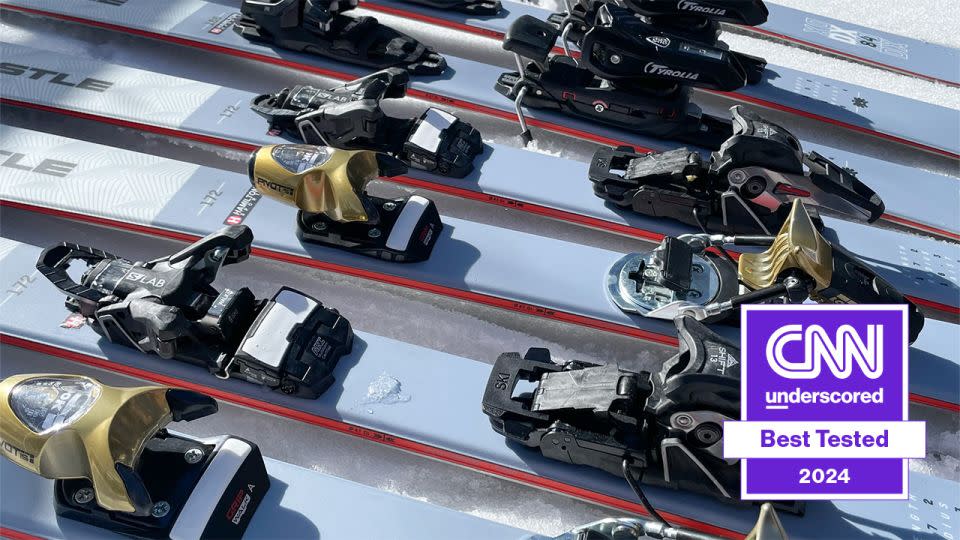
Skis get the glory, but ski bindings can make or break your day on the slopes. The sorcery with ski bindings is that you shouldn’t really be thinking about them at all — that means they’re doing their job. But if they fail, you’re in for a no-good, very bad day.
Fortunately, we now have a lot of variety when it comes to ski bindings. They’re still designed to hold your boot to your ski, but you can choose from a variety of DIN settings, heel elasticity, brake width, boot sole compatibility and even a number of color options. That’s why we spent the past six weeks running lap after lap at our local ski hill, testing seven of the most popular ski bindings of the year. We compared their performance and stacked their features against one another, ultimately arriving at the best. Here are the results.
Marker Griffon 13 ID Bindings
Best ski bindings

These bindings the perfect trifecta: reliable, durable and versatile. Redesigned in 2021, the Griffon 13 ID are easy to click into, even in the deepest and slickest of conditions. Plus, the toe pieces work for both regular boot soles and the newer GripWalk soles, so you’ve got options when it comes to your ski footwear.
From $190 at Evo
$216 at Marker Bindings
Look Pivot 15 GW Bindings
Best ski bindings for experienced skiers
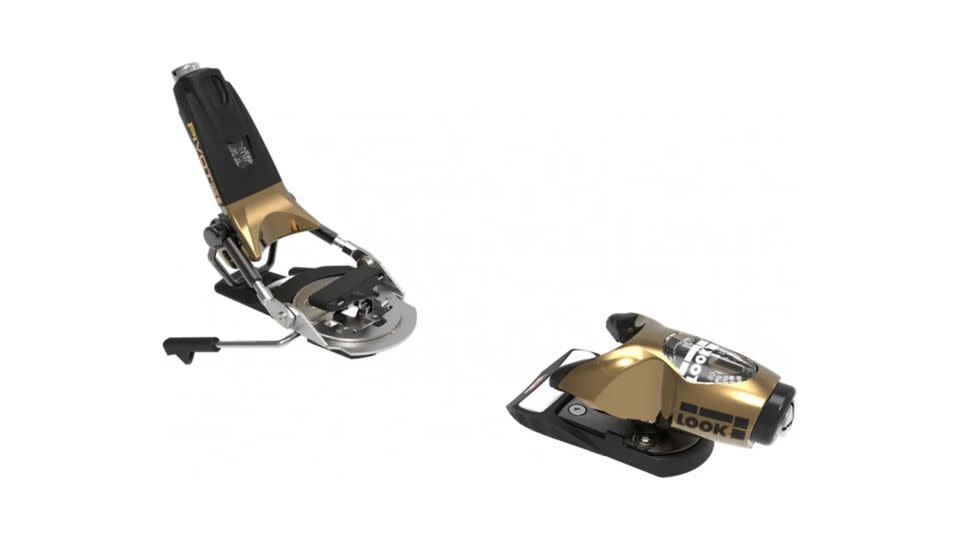
You can’t shred the gnar without seeing a handful of these bindings in their iconically colorful Forza 3.0 colorway. The Pivots are a top choice for experienced skiers, thanks to their turntable-style heel pieces that add more elasticity than other traditional bindings. Plus, they offer more suspension, so you’re virtually guaranteed a smooth ride.
Salomon S/Lab Shift MNC 13 Bindings
Best hybrid ski bindings
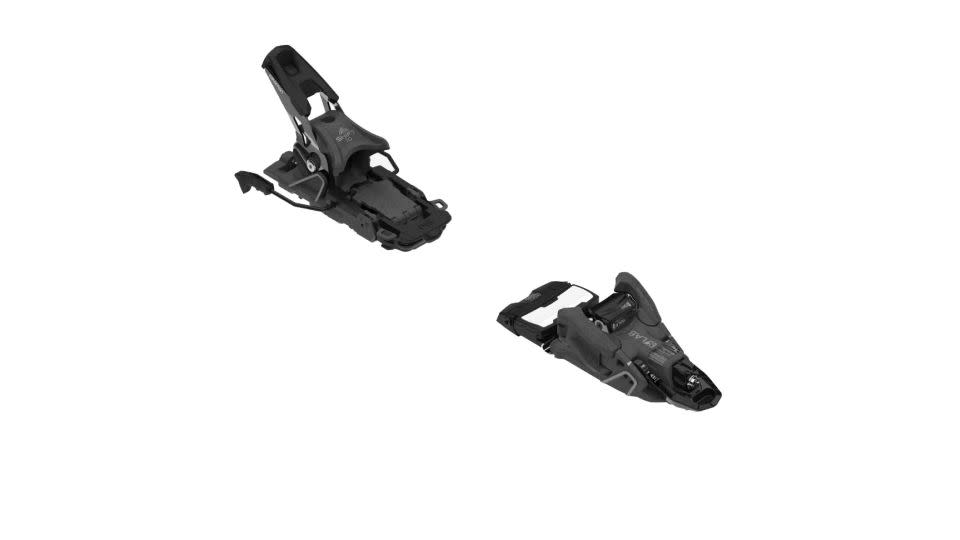
The Salomon Shift bindings are a single-quiver option for those who want to ski resorts and the backcountry with one kit. In downhill mode, you have traditional alpine toe and heel pieces, but they can transition to tech-pin bindings for touring, giving you the best of both worlds.
Best ski bindings: Marker Griffon 13 ID Bindings
$270 From $190 at Evo; $270 $216 at Marker Bindings; or $270 at REI

Consider the Marker Griffon 13 bindings the little black dress of the ski-binding world. While they aren’t the most glamorous or flashiest bindings we tested, they’ll get the job done for most skiers on most terrain — and at a fraction of the price of many other bindings.
For starters, these bindings are versatile. Gone are the days when everyone on the slopes was wearing traditional downhill ski boots with the standard boot sole lugs. Many folks ski in hybrid boots (designed for resort and backcountry use) or boots with GripWalk, a rubber-and-rockered boot sole technology that makes it easier to safely walk without slipping. The Griffins are compatible with traditional boots, GripWalk, hybrid boots and WTR boots (which are tough to find these days, but still). Of all the bindings we tested, the Marker Griffon 13 and the Salomon Shift MNC 13 are the only two with such a generous compatibility offering. You don’t even have to adjust the toe height of the bindings if you’re swapping between boots; they’ll fit no matter what. This means they are likely to work for you, regardless of what boots you own.
Bindings are a funky thing in that you don’t want them to prematurely release, but you do want them to release when needed, like during a bad fall. If it goes wrong in either direction, it could cause injury (said as someone with two ski-related knee surgeries). It’s hard to find that sweet spot in bindings, but the Griffon 13 bindings balance it well. The DIN settings (the release force of your bindings) vary from 4 to 13, so there is a wide enough range to accommodate almost any ski ability or body size. Assuming you correctly set your DIN setting for your ski style, the Griffon 13 bindings are reliably safe and sturdy. During our six weeks of testing, they never once prematurely popped off, even after a few questionable jumps over various kickers while skiing at Aspen Snowmass.
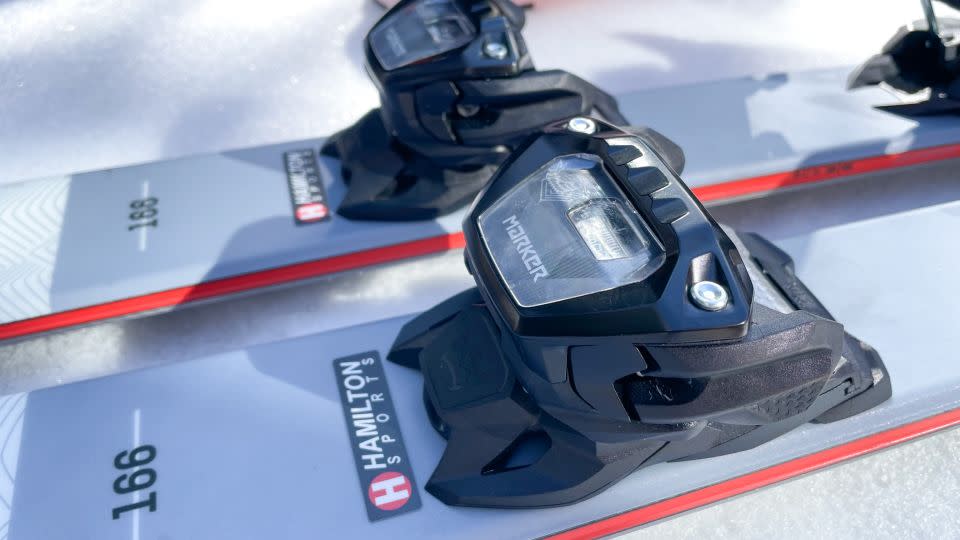
While they hold strong when needed, they are surprisingly easy to click into, no matter the conditions. I’m recovering from knee surgery this year and was surprised to realize that clicking my operated leg into some bindings still proves to be a challenge, even on flat and mellow terrain. During testing, I was never once able to click my left leg into the Marker Squires without bending over and manually pulling up the heel piece, but I never struggled with the Griffon 13 bindings. I was able to get myself into them even when I lost a ski in a powdery drift after Aspen received 12 inches of the fluffy stuff.
Some of the newer bindings like the Head/Tyrolia Protectors have a higher stand height, which means the binding lifts your boot higher off the ski. The Griffon 13 bindings are on the lower side with a 24-millimeter stand height. This means you’re closer to the ski when in powder or playing in the park. It also make the Griffon 13 a great choice for beginners since they’re easier to learn to balance but they’re not so low that carving through turns is a problem.
Bottom line: The Marker Griffon 13 bindings are versatile and reliable enough that most skiers will be happy with their performance, no matter where they ski. And as the second-most-affordable bindings in our test, we think they’re a screaming value.
Best ski bindings for experienced skiers: Look Pivot 15 GW Bindings
$430 at Look Bindings, Powder7 and REI
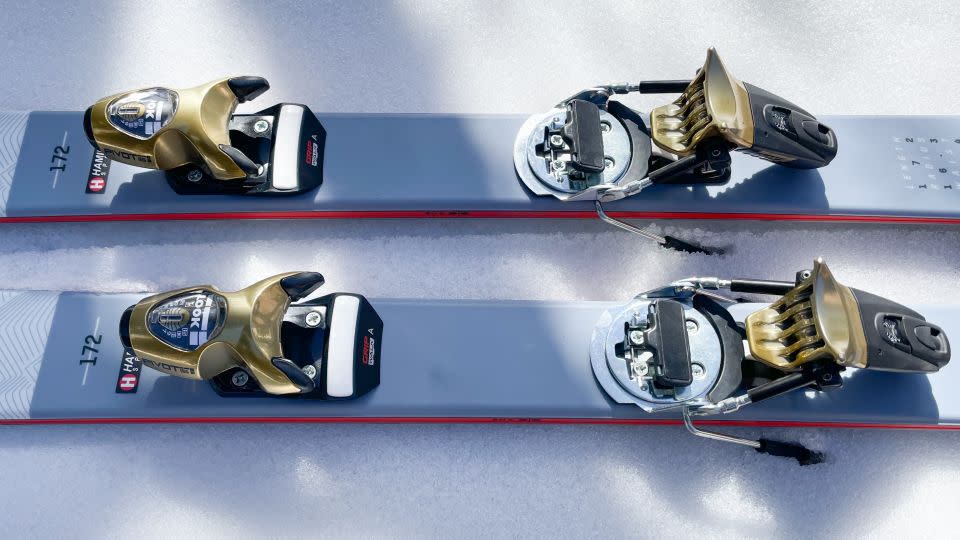
If you’ve skied for more than a few years, there’s a great chance you’re familiar with these cult favorites. Not only do the Look Pivot 15 bindings have their notable turntable style of heel pieces but they’re one of the most durable bindings we tested.
The secret is that snazzy heel piece. While Look initially launched the technology in the 1960s, it has remained virtually unchanged since — it’s that good. With traditional bindings, you click in and you’re largely stuck in place, without much elasticity or movement. But Look added a swivel platform beneath the heel — just like those turntables from the 1960s — that adds a ton more travel. As a result, each toe has 45 millimeters of horizontal elasticity and a monster 28 millimeters of vertical travel in each heel. This is the most movement of all the bindings we tested, with the Atomic Strives coming the closest with 47 millimeters of toe elasticity but just 15 millimeters at the heel.
The amazing heel elasticity in the Look Pivot 15 bindings gives you more travel, which helps prevent an unplanned ejection from your bindings. This is especially crucial for experienced skiers who need those bindings to stay on, no matter how hard they’re hucking cliffs or throwing tricks in the park. To that end, the Pivot 15 are the strongest bindings we tested. The trade-off: This type of technology comes with a cost and is overkill for beginner to intermediate skiers.
While some people think the turntable design means the Look Pivot 15 bindings are safer for your knees, that’s a myth. The only bindings we tested that are proven to be safer are the Head/Tyrolia Protectors since they have a full horizontal heel release (you can kick out of the heel from the side and not just vertically).
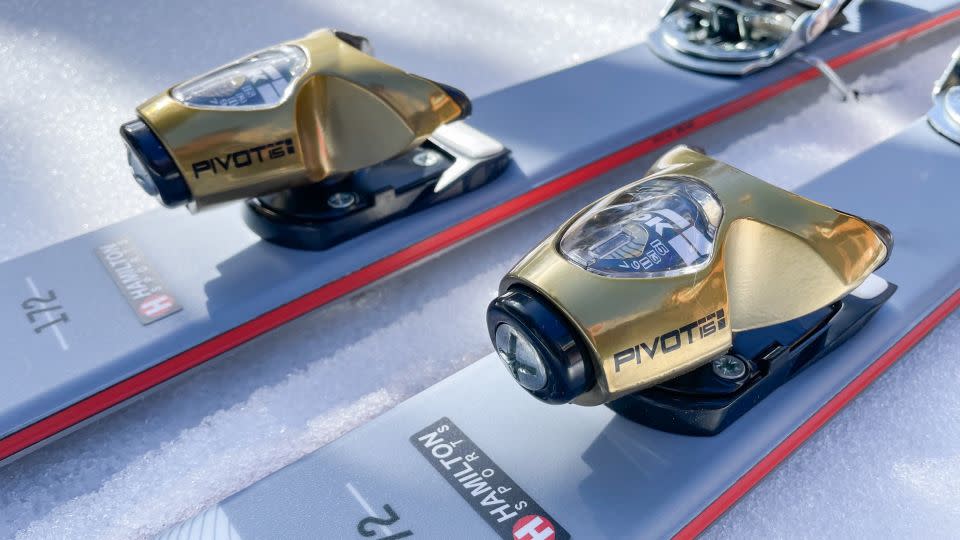
The Look Pivot 15 bindings are also super durable. Bindings are usually made of metal or plastic, but plastic can break more easily. These Look bindings have an entirely metal construction, making them virtually bombproof. I only skied on them for six weeks in testing, but they look as if they arrived yesterday. Trade-off: Metal bindings are heavier than plastic, but most downhill skiers aren’t too concerned about weight penalties.
They come in a wide range of DIN settings (6 to 15) so you have a lot of options. (And if you don’t really need to go as high as 15, you can opt for the Look Pivot 12 bindings, which have a range of 4 to 12, although they have plastic toe pieces.)
It’s also worth noting that the Pivot 15 bindings have an almost-neutral ramp angle. Just like with shoes, ski boots have a stack height, which is the difference between the height of your toe piece and the height of your heel piece. The toe is 18 millimeters and the heel is 19 millimeters, so the Pivot 15 bindings only have a stack height of 1 millimeter. Often called the ramp angle, this difference may not be noticeable, since most other bindings have ramp angles of 4 to 6 millimeters — and really, that’s a minuscule difference. However, as a female skier with smaller feet, the ramp angle is more noticeable since it is consolidated over a shorter distance, and ski boots have their own ramp angles that come into play too. A lot of this comes down to personal preference, but too much ramp angle can throw off your balance while skiing. Because of this, we also think the Look Pivot 15 bindings are a great choice for those with petite tootsies.
While the Griffon 13 bindings are a great overall choice, experienced skiers will appreciate the metal rather than plastic construction of the Look Pivot 15 bindings, not to mention the increased elasticity that helps prevent unplanned ejections when bombing down advanced terrain.
Best hybrid ski bindings: Salomon S/Lab Shift 13 MN Bindings
$600 $480 at Evo or $600 at Salomon
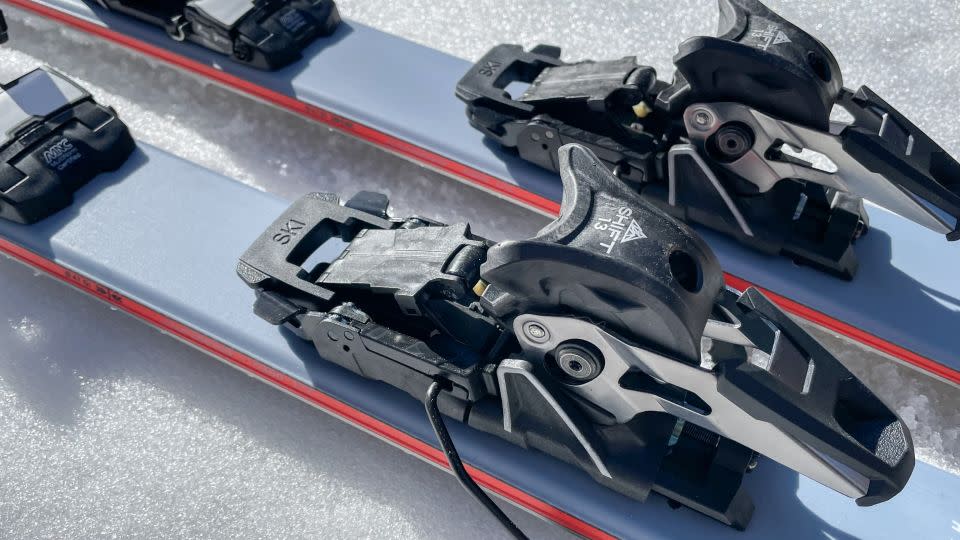
If you’re hankering to try uphill skiing or venture into the backcountry, the Salomon S/Lab Shift MNC 13 bindings may be the ticket. They act just like traditional pin/backcountry bindings on the uphill, but the unique design transitions to a standard alpine binding for the descent.
Backcountry ski and touring bindings (often called tech or pin bindings) operate on a pin system where two pins insert themselves into holes on each side of the ski boots’ toe pieces so you can pivot around them while lifting your heels to climb uphill in your skis. For the descent, more pins are inserted into the heel pieces so you can ski downhill in a similar fashion to how you would in traditional downhill ski bindings. The caveat is this type of binding isn’t as reliable or powerful when compared to options like the Marker Griffon 13 or Look Pivot 15 bindings, so most skiers would never use their tech bindings to downhill at a resort.
That’s why the Salomon Shift 13 bindings are ingenious. They operate on a pin system for the uphill, just like other tech bindings, but once you transition the bindings to downhill mode, the skier can click into the toe and heel pieces without any pins — just like a standard alpine binding. I spent six weeks largely skiing the Shift 13 bindings from chairlifts in Aspen, and I felt they skied just as well as the Marker Squire or Tyrolia Attack bindings.
In addition to the Marker Griffon 13 bindings, the Shift 13 are the only other bindings in our test that are compatible with regular alpine boots, GripWalk, hybrid boots and WTR. I routinely alternated between three pairs of ski boots with varying boot soles, and I never once had to adjust or alter the toe pieces in any way.
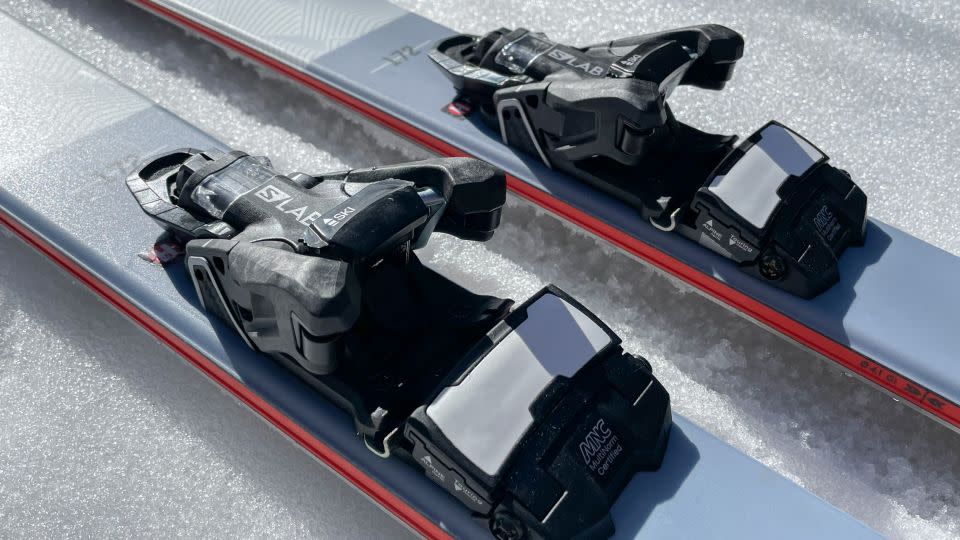
The Shift 13 bindings have a decent DIN range of 6 to 13 that is good enough for most skiers (though it’s not as wide as what’s offered by the Marker Griffon 13 or Look Pivot 15). If you’re a lighter skier or less experienced and don’t want to pay for the higher DIN availability, the Salomon S/Lab Shift 10 MN bindings do cost about $50 less than the Shift 13 bindings.
As with all things, you don’t get such groundbreaking technology without some trade-offs. At nearly 4 pounds per pair, the Shift 13 bindings are far heavier than most tech bindings. They weigh roughly the same as the Marker Griffon 13 or the Tyrolia Attack 14 bindings — neither of which are meant for climbing. And the transition from uphill mode to downhill mode is tricky since you are essentially swapping the binding from tech to alpine. During my inaugural testing voyage, I dumbly stared at the contraption for a solid 10 minutes as I tried to figure it out. Our advice: Tinker with these at home so you have it dialed before you hit the slopes.
But even with those caveats, the Salomon Shift 13 bindings are the top choice for crossover skiers wanting to spend time on the groomers and in the backcountry.
Everything you need to know about ski bindings
Most skiers understand the basic concept of bindings: They hold your boot to your ski. But beyond that, there is a lot of ski jargon and many tech details that can often feel confusing, even to the most experienced shredders.
When you’re looking at bindings online, you’ll quickly notice that you need to choose a brake width. The brakes are the small metal legs that stick out from either side of the binding. When you’re clicked in, they pop up but when you release your binding, the brakes will drop down and hit the snow. The idea is that these two legs will prevent your skis from running off down the mountain. However, they only work if you choose the appropriate width to accommodate your ski. There aren’t any strict rules, but you generally want to select a width that is no more than 10 or 15 millimeters wider than the waist (or middle) of your ski.
DIN settings are also important. A solid ski binding is designed to keep you attached to your skis while descending but should release when hit with unusual force — like when you ragdoll down the mountain. We spoke a lot about heel and toe pieces above, and that’s because these are the two attachment and release points of a binding. In the toe, your ski boot will release in a side-to-side motion. In the heel, it will release in an upward motion when hit with enough force (although, new bindings like the Head/Tyrolia Protectors now release from the heel in a lateral direction too). The tricky part is determining at what point — or DIN value — you want your binding to release. This will depend on a number of factors like your weight, skier ability and terrain preference.

This is where DIN settings come in. DIN is short for Deutsches Institut für Normung and it’s the industry norm that defines the quantity of force required to release a locked-in boot. This number can be adjusted on your bindings. The higher the number, the longer the binding will hang onto your boot when hit with force. Aggressive or larger skiers will want a higher DIN setting so they don’t accidentally pop out of their bindings, while smaller or beginner skiers will want a lower DIN setting. When selecting a binding, a good rule of thumb is to avoid starting at the high point. If you know you want a DIN setting of 10, don’t pick a binding that caps out at 10. And if you’re unsure of where you should be, that’s okay. Skiers should always take their setup to a qualified ski shop to have the technicians help adjust and determine the proper DIN settings.
We discussed elastic travel a lot with the Look Pivot 15 bindings, but that’s also because it applies to your DIN settings. Elasticity is the distance (in millimeters) that your boot can travel within your bindings before they completely release. A bigger number means there is more wiggle room, something experienced skiers may want as they hit bigger features and terrain. This elasticity means you can set your DIN settings lower to prevent injury while still avoiding an unplanned ejection while you’re hucking cliffs. This is also why the Look Pivot 15 bindings are classified as the best for experienced skiers. If you’re a beginner, you don’t need that much elasticity, so it’s not worth the investment.
Stand height is another ski term that feels confusing, though it may be familiar to runners who see it used with their footwear. In short, stand height is the distance your binding puts you from the ski. The higher the number, the farther your boot sits from your ski. There is no concrete range but we generally feel that a lower stand height is better. Higher stand heights are great for carving turns, which is why they are favored by ski racers, but otherwise, most skiers prefer to be closer to the ski where you can better feel the snow and the ski itself. However, it should be noted that as binding technology changes, stand heights do too. The Head/Tyrolia Protectors are the only bindings to laterally release at the heel — making them key for those with knee injuries — but that tech comes with a higher stand height. In this way, it comes down to a lot of preference.
How we tested
To determine the best ski bindings, we objectively evaluated all sorts of factors like safety, reliability, versatility and ease of use. To do this, we divided testing into five categories: downhill performance, ease of use, sole compatibility, release values and features. From there, we directly compared the features of each pair of ski bindings through six weeks of field testing.
We also aimed to make our field test as objective as possible by removing a number of variables. First, we tested actual ski bindings rather than demo bindings. Demo bindings are often used in testing scenarios since you can easily adjust the sizing to accommodate a variety of skiers; however, they add a lot of stand height and detract from the actual feel of the binding while skiing. Secondly, we tested all the bindings on the exact same skis. We partnered with Kästle Skis, who loaned us a fleet of DX84 skis for us to mount with our testing bindings. In this way, the ski did not influence our field-testing experience since it was neutral across the board. All the mounting (and remounting … ) was donated by Hamilton Sports in Aspen, Colorado.
Here’s the full breakdown of our process:
Downhill performance
Various conditions: We skiied the bindings at least five times on a variety of terrain. How did each pair perform in all the different conditions?
Stand height: We measured the stand height to determine the actual distance from the ski and considered how that may or may not affect performance.
Ease of use
Entry: We clicked in and out of the bindings at least 10 times on a variety of terrain. How did they perform in the tougher terrain, like steep slopes and deep snow?
Boot sole compatibility
Evaluate quantity: According to manufacturer specs, which boot soles will work with these bindings? When possible, we clicked in and out of the bindings with a variety of boot soles.
DIN settings
Range: What does the manufacturer list as the DIN range? Is this inclusive of a variety of skiing abilities?
Features
Technology: Is there any new or unique technology that improves performance or safety?
Variety: Are the bindings available in numerous color options?
Other ski bindings we tested
Head/Tyrolia Protector PR 13 GW Bindings
$525 at Head and Tyrolia; or $430 at Evo
Unlike all the other bindings in our testing, the Head/Tyrolia Protectors have 180 degrees of lateral release in the heel, making skiers much less likely to tear a ligament in backward twisting falls, which is still a prime cause of knee injuries. They are one or two on the market with this technology (the other is a brand called Knee Binding, which we did not test). However, the bindings took a bit of force to step into and they have a fairly high stand height of 33.5 millimeters, the highest in our test. If you’re someone like me who has experienced multiple knee surgeries and it’s a pervasive thought in your mind, they’re definitely worth a look.
Atomic Strive 14 GW Bindings
$300 at Atomic or $260 $208 at Evo
If you like to stay close to the snow for a powerful, dynamic feel on skis, the Atomic Strives are a good pick with a 19.6-millimeter stand height, the second lowest in our testing behind the Look Pivot 15 bindings. They’re only compatible with alpine boots and GripWalk, and we struggled a bit to get our operated leg into the bindings. But, really, these bindings shine on fatter skis since they’re so low to the ground. If you rip groomers with a thinner waist, you may not love them as much.
Tyrolia Attack 14 GW
From $245 at Powder7 or $375 at Tyrolia
The Tyrolia Attack 14 bindings gave the Marker Griffon 13 bindings some good competition for the best binding, thanks to their ease of entry, affordability and wide DIN range. We think most skiers will love these, but the Griffon 13 bindings edged them out simply based on boot sole compatibility. Unlike the Griffon 13 bindings, which work with almost any boot out there, the Attack 14 bindings will only work with alpine boots or GripWalk. This won’t be a factor for a large portion of skiers, but it was our determining criteria.
Marker Squire 11
$230 $184 at Marker and Evo
If you’re a beginner skier looking for a budget-friendly option, the Squire 11 bindings are the way to go. The stand height is relatively low, and the bindings work with both alpine boots and GripWalk. They’re one of the lightest bindings in our test (second to the Atomic Strive) and are constructed with plastic, so the durability isn’t the best, but if you’re just getting out there, there’s a lot of value here.
Note: The prices above reflect the retailers' listed price at the time of publication.
For more CNN news and newsletters create an account at CNN.com

